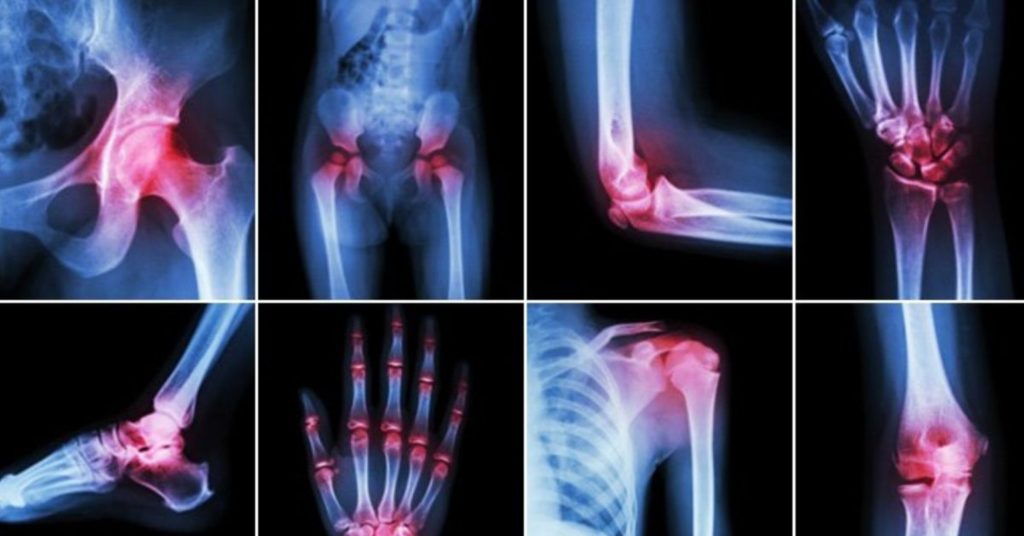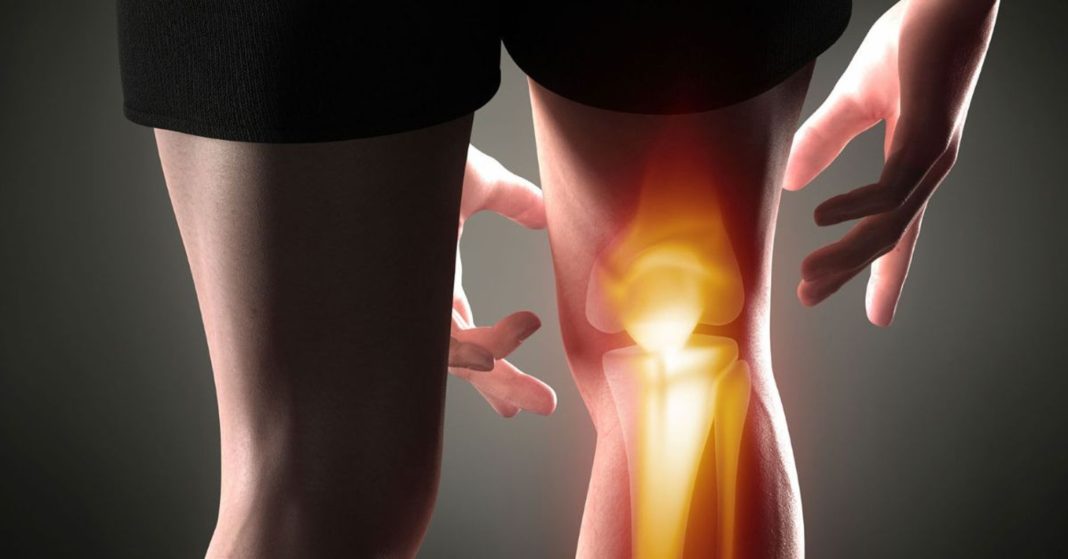Arthritis is one of the leading causes of joint pain and disability around the world. Many people think it only affects the elderly, but the truth is that arthritis can affect men, women, and even children. It makes the joints — where bones meet — painful, stiff, and swollen, which can make daily activities such as walking, writing, or even holding objects very difficult.
Today, arthritis affects millions of people, but with early care, correct treatment, and lifestyle changes, one can manage arthritis effectively and live a healthy life.
What is Arthritis?
Arthritis is not just a single disease; it is a group of conditions that cause inflammation in the joints. The word comes from “arthro” meaning joint and “itis” meaning inflammation. Joints like the knees, hips, shoulders, elbows, and fingers are most commonly affected.
Inside a healthy joint, there is a smooth layer of cartilage that cushions the bones and allows them to glide smoothly when moving. In arthritis, this cartilage gets damaged or worn away, causing the bones to rub against each other. This results in pain, swelling, stiffness, and reduced movement.
Types of Arthritis
There are more than 100 types of arthritis, but the most common ones are:
Osteoarthritis: The Most Common Form of Arthritis
- Known as wear-and-tear arthritis.
- Caused by gradual breakdown of cartilage with age or overuse.
- Most common in people over 50 years old.
- Symptoms of this type of arthritis include pain after activity, stiffness in the morning, and difficulty climbing stairs.
Rheumatoid Arthritis: An Autoimmune Disorder
- A serious type of arthritis where the immune system attacks the body’s own joints.
- Can affect multiple joints at the same time, often symmetrically (both hands or both knees).
- May also cause tiredness, fever, and weight loss.
- If untreated, it can damage bones, muscles, and even internal organs.
Juvenile Arthritis: Arthritis in Children
- Affects children below the age of 16.
- Symptoms of arthritis in children include swollen joints, tiredness, fever, and slowed growth.
- Early treatment is very important to prevent permanent damage.
Gout: A Sudden Painful Arthritis
- Caused by the build-up of uric acid crystals in the joints.
- Usually starts in the big toe but can spread to ankles, knees, and hands.
- Attacks often begin suddenly, with intense pain, redness, and swelling.
Other Types of Arthritis
- Psoriatic Arthritis (linked to skin disease psoriasis)
- Ankylosing Spondylitis (mainly affects the spine)
- Infectious Arthritis (caused by infections in the body)
Causes of Arthritis
Doctors say arthritis can develop due to many reasons, and often more than one factor is involved.
- Age: Older adults are more at risk.
- Genetics: Arthritis often runs in families.
- Previous Injuries: Damaged joints from accidents or sports injuries may later become arthritic.
- Obesity: Extra body weight increases pressure on joints like hips and knees.
- Immune System Problems: In rheumatoid arthritis, the immune system attacks the body’s joints.
- Infections: Some bacterial or viral infections can trigger joint inflammation.
- Lifestyle Factors: Lack of exercise, poor diet, smoking, and alcohol use may increase arthritis risk.

Symptoms of Arthritis
The symptoms of arthritis may differ depending on the type, but the common signs include:
- Joint pain that continues for weeks or months
- Morning stiffness lasting 30 minutes or more
- Swelling, redness, and warmth in the joints
- Limited movement and difficulty bending or straightening the joints
- Weakness in the muscles surrounding the affected joint
- Crackling sound when moving the joint
- In severe types of arthritis like rheumatoid arthritis: fever, tiredness, and weight loss
Diagnosis of Arthritis
Arthritis can be confirmed through medical tests and doctor consultations.
- Physical Examination: Checking joint movement, pain level, and swelling.
- Medical History: Learning about family background, injuries, and lifestyle.
- Blood Tests: To detect inflammation markers, especially for rheumatoid arthritis.
- X-rays and MRI Scans: To check cartilage loss, bone damage, or joint deformities.
- Joint Fluid Analysis: Testing joint fluid for infections, uric acid, or crystals.
Treatment for Arthritis
Although there is no permanent cure for arthritis, the goal of treatment is to reduce pain, protect joints, and improve quality of life.
Medications for Arthritis
- Pain Relievers: Medicines like paracetamol reduce pain.
- NSAIDs (Non-Steroidal Anti-Inflammatory Drugs): Ibuprofen or naproxen reduce swelling and pain.
- Corticosteroids: Used for severe inflammation.
- DMARDs (Disease-Modifying Anti-Rheumatic Drugs): Slow down damage in rheumatoid arthritis.
- Biologic Agents: New advanced medicines for difficult cases of arthritis.
Physical Therapy for Arthritis
- Stretching and strengthening exercises to support joints.
- Low-impact activities like yoga, cycling, and swimming.
- Warm water therapy to ease stiffness.
Lifestyle Changes for Arthritis
- Maintain a healthy weight to reduce stress on joints.
- Follow a balanced diet rich in calcium, vitamin D, and omega-3 fatty acids.
- Get enough rest and good sleep.
- Avoid smoking and limit alcohol.
Surgery for Severe Arthritis
- Joint Replacement Surgery: Damaged joints like knees and hips are replaced with artificial ones.
- Joint Fusion: For smaller joints like wrists and ankles.
Preventing Arthritis
While not all cases can be prevented, some steps reduce the risk of developing arthritis.
- Exercise regularly to keep joints strong and flexible.
- Avoid joint injuries by using correct posture and techniques during sports.
- Eat a nutritious diet full of vegetables, fruits, and fish.
- Keep body weight under control.
- Avoid smoking and limit alcohol intake.
Living with Arthritis
Living with arthritis may feel challenging, but the right habits make life easier.
- Use warm compresses for stiffness and cold packs for swelling.
- Practice gentle stretching exercises daily.
- Take medicines regularly as prescribed by the doctor.
- Use supportive tools like walking sticks or braces if necessary.
- Join arthritis support groups for emotional support and advice.
Conclusion
Arthritis is a condition that affects millions of people worldwide, from children to the elderly. While it cannot always be completely cured, the right treatment, lifestyle changes, and preventive steps can help manage arthritis effectively. By staying active, eating well, and getting early medical help, people with arthritis can continue to lead healthy, active, and fulfilling lives.
Frequently Asked Questions (FAQ) About Arthritis
1. What is Arthritis in simple words?
Arthritis is a health condition where the joints become painful, stiff, and sometimes swollen. Joints are the places where two bones meet, like your knees or fingers.
2. Can children also have Arthritis?
Yes. Some children suffer from a type called juvenile arthritis, which affects kids under 16 years old. It can cause joint pain, swelling, and sometimes fever.
3. What are the early signs of Arthritis?
The early signs of arthritis include joint pain, stiffness in the morning, swelling, and difficulty moving joints. If these symptoms last for more than two weeks, a doctor should be consulted.
4. How is Arthritis diagnosed?
Doctors diagnose arthritis by checking medical history, physical examination, X-rays, blood tests, and sometimes joint fluid tests.
5. Can Arthritis be completely cured?
There is no permanent cure for arthritis, but treatment with medicines, exercise, and lifestyle changes can reduce pain and allow people to live a normal life.
6. What food is good for Arthritis?
Foods rich in calcium, vitamin D, omega-3 fatty acids, fruits, and vegetables are good for arthritis. Avoid too much red meat, junk food, and sugary drinks.
7. Does weather affect Arthritis pain?
Yes. Some people with arthritis feel more pain and stiffness in cold or rainy weather, but the weather itself does not cause arthritis.
8. Can exercise help in Arthritis?
Yes. Gentle exercises like walking, swimming, yoga, and stretching help keep joints flexible and reduce pain. But very hard exercises may worsen joint pain.
9. What is the difference between Osteoarthritis and Rheumatoid Arthritis?
- Osteoarthritis happens when the joint’s cartilage wears out with age or overuse.
- Rheumatoid arthritis is an autoimmune disease where the body’s defense system attacks the joints.
10. How can Arthritis be prevented?
Arthritis can sometimes be prevented or delayed by:
- Maintaining a healthy weight
- Doing regular exercise
- Eating a balanced diet
- Avoiding joint injuries
- Not smoking or drinking too much alcohol



